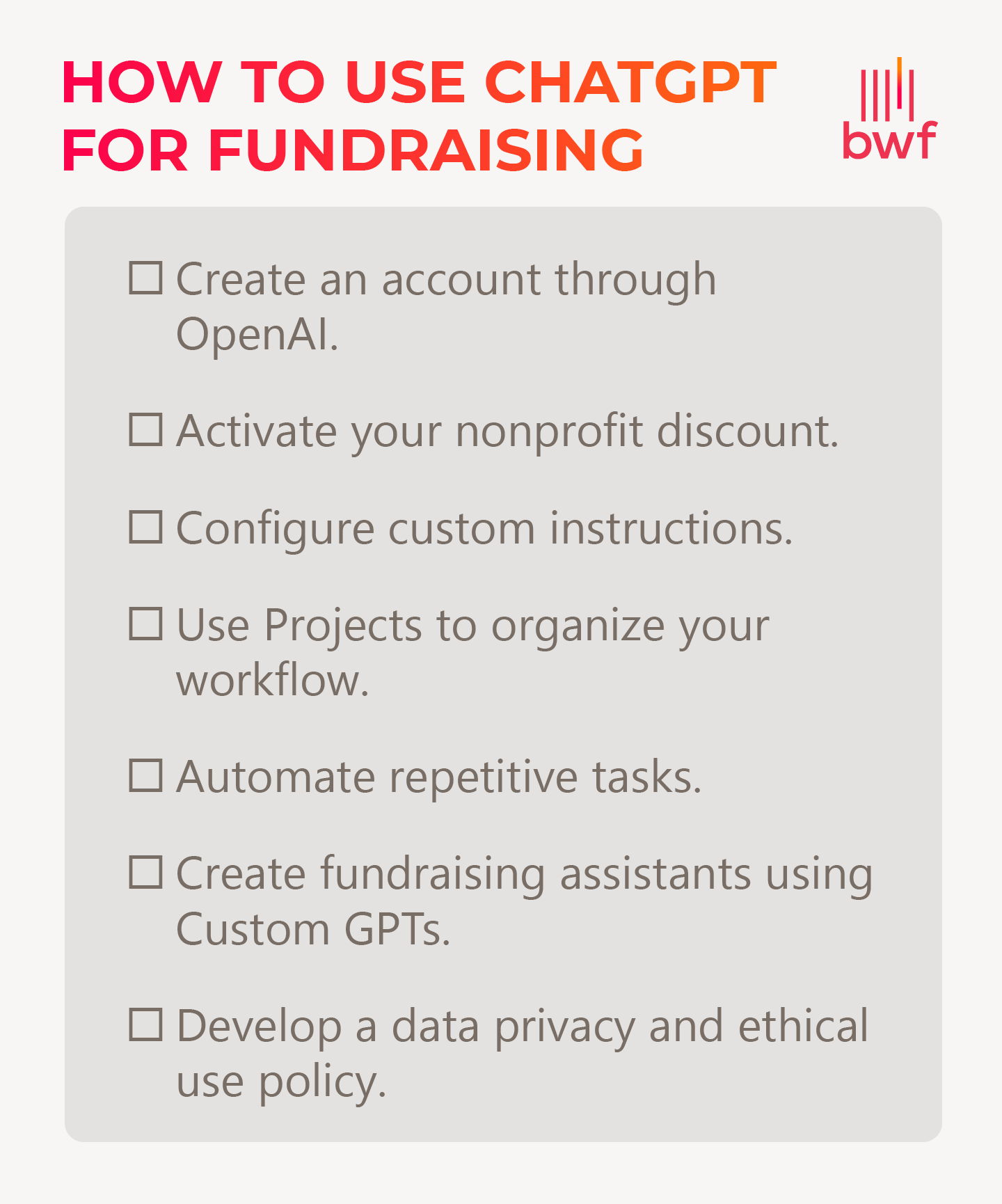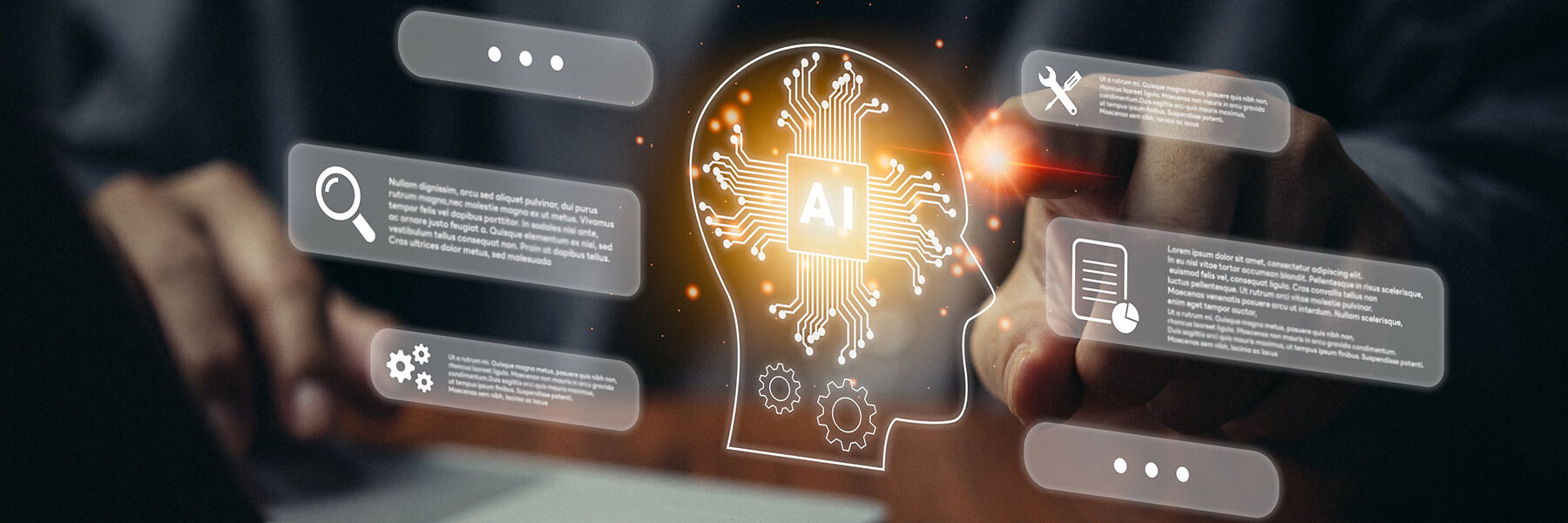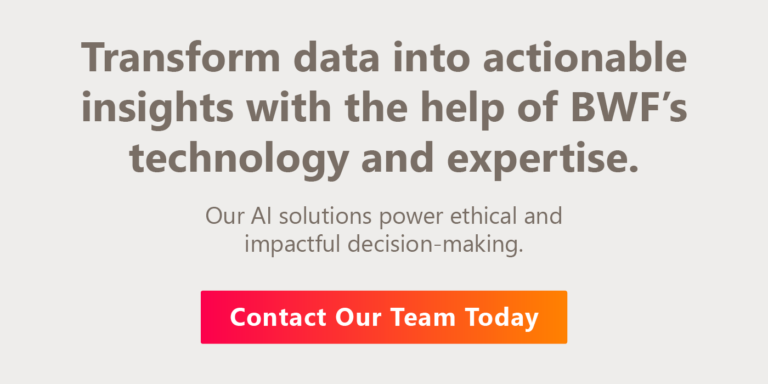It’s safe to say that ChatGPT, the artificial intelligence chatbot released by OpenAI in November 2022, has upended the way that many people use the internet. Nonprofit fundraising isn’t immune to this radical new shift in internet browsing and professional communication. Now, 58% of nonprofits use AI to communicate, an adoption rate that’s faster than that of the private sector.
As fundraising communication professionals and annual giving experts, these findings prompted us to consider their implications for our own work and that of our clients in the fundraising space. We’ve decided to share our thoughts on the potential uses and challenges of generative AI, as well as what we are keeping an eye on moving forward. We’ll discuss:
- Ways to Use ChatGPT for Fundraising
- How to Configure Your ChatGPT Account for Fundraising
- Considerations for ChatGPT for Nonprofits
- ChatGPT for Fundraising: Future Trends
- Work with BWF to Optimize Your Generative AI Approach
Communications, as we know them, are changing and are unlikely to revert to what they were. Don’t despair, though—BWF’s expert fundraising team is here to help you navigate these changes with ease.
Ways to Use ChatGPT for Fundraising
We’ve been monitoring the chatter about how people are using generative AI. Here are some of the ways we’ve seen it incorporated into communications and annual giving work:

- Generating ideas for headlines or email subject lines
- Developing content for email newsletters
- Testing blogs, radio spots, and welcome letters for engagement and effectiveness
- Looking for the right word/phrase or better ways to say something
- Conducting research about unfamiliar areas (One person noted that “it’s replaced Google for me.”)
- Producing personalized acknowledgment letters
- Generating scripts for phone calls
- Drafting direct mail content
- Creating social media posts
- Developing comprehensive donor personas
- Crafting compelling case for support narratives
- Developing stewardship reports
- Brainstorming event themes and ideas
- Summarizing research papers or reports for grant applications
- Generating ideas for donor segmentation
- Creating fundraising campaign slogans
- Drafting thank-you notes for donors
- Writing compelling calls to action for various fundraising materials
The list goes on and on. Additionally, as ChatGPT evolves and new versions are released, new use cases continue to emerge.
How to Configure Your ChatGPT Account for Fundraising

1. Create an account through OpenAI.
Your organization will likely want to set up a ChatGPT Business account. Business accounts (formerly known as ChatGPT Team) enable collaboration among multiple staff members. You’ll gain access to a dedicated workspace, expanded messaging capabilities, simplified team management, and administrative controls.
2. Activate your nonprofit discount.
OpenAI offers a nonprofit discount of 20% off monthly or annual plans for ChatGPT Business. They also offer a 50% discount on ChatGPT Enterprise for large nonprofits. To access your nonprofit discount, simply complete a survey and provide the required official documentation.
3. Configure custom instructions.
Providing ChatGPT with custom instructions allows you to train the generative AI tool to understand your nonprofit’s needs and respond in a way that helps you further your fundraising goals.
To ensure your ChatGPT instance remains on-brand, provide details about your nonprofit’s:
- Mission and vision
- Target audience and donor personas
- Tone of voice and brand personality
- Core messaging and value proposition
- Fundraising goals
- Preferred calls to action (CTAs)
4. Use Projects to organize your workflow.
With Projects, you can organize different fundraising campaigns or communications initiatives into their own folders for easier management. For example, you could create Projects for annual giving, your fundraising gala, email communications, and grant applications. Then, you can add files relevant to each project to cultivate custom workspaces with tailored ChatGPT conversations.
5. Automate repetitive tasks.
Use ChatGPT’s Tasks feature to set up specific recurring prompts and reminders. For example, you can establish prompts such as:
- “Draft a weekly social media post update about our ongoing capital campaign.”
- “Summarize recent research and news articles related to our cause that we can include in donor updates.”
- “Remind me about donor anniversaries for our top 20 major donors.”
Automating these simple recurring tasks gives your fundraising team more time to focus on higher-level fundraising strategies and direct donor engagement.
6. Create fundraising assistants using Custom GPTs.
Custom GPTs are personalized chatbots you can use to complete specific tasks. You can add custom instructions to these bots to make them more tailored than your regular ChatGPT conversations.
For instance, you can create custom GPTs to help with grant applications, donor communications, or event planning.
To set up Custom GPTs, you’ll have to provide them with:
- Context about what you want them to do. For example, if you’re creating a donor communications GPT, you could provide it with this context: “You are an expert donor communications professional for a nonprofit focused on [your nonprofit’s cause]. Your job is to draft messages that align with our brand voice and inspire donors to continue giving.”
- Knowledge. Upload documents, links, and files that serve as the GPTs’ knowledge base. The GPTs will pull directly from these resources to prevent hallucinations and stay on brand.
- Capabilities. Define the specific actions your GPT can perform, such as writing, editing, brainstorming, and analyzing text. You may say, “You will draft four versions of a nonprofit message for different marketing platforms: email, Facebook, LinkedIn, and our website’s blog.”
- Instructions: Provide clear, concise, and detailed instructions for how the GPT should behave and the tone it should adopt. For example, you might say, “Use a neutral, professional tone, and don’t be overly complimentary to the user.”
Test your Custom GPTs by trying different prompts and refining the instructions until you get outputs that align with your nonprofit’s brand and fundraising goals.
7. Develop a data privacy and ethical use policy.
Don’t compromise your nonprofit’s commitment to data protection and ethics. Establish ChatGPT safety guidelines, such as:
- Never input personally identifiable donor information (PII) when using ChatGPT. This includes donors’ names, addresses, contact information, and donation amounts. Anonymize any data before using it in prompts.
- Review and edit all AI-generated content. ChatGPT is a powerful tool, but it is not a substitute for human oversight. Fundraising team members must ensure all fundraising materials are accurate, empathetic, and align with your organization’s values before they are sent to donors.
- Be transparent. While full disclosure of AI use isn’t essential in every communication, you should actively recognize situations where transparency will build and maintain supporter trust. For example, in an email roundup of recent news and reports from your nonprofit’s field, you could include a message saying, “Our team utilized AI tools to assist in drafting these news updates, ensuring we can bring you the latest news related to our mission quickly and efficiently.”
These guidelines will allow you to maintain ethical standards while making the most of innovative new tools to streamline your fundraising.
Considerations for ChatGPT for Nonprofits
Many fundraising communicators and annual giving professionals view AI as a means to enhance productivity and boost their creativity. However, the tools aren’t a panacea, and their use should come with some guardrails.
AI tools work best when:
- You’re not counting on originality or creativity.
- You’re looking to validate or double-check your work.
- You’ve got writer’s block or need to jumpstart a task.
- You need to summarize a lot of information at once.
- You want ideas for rewrites from different perspectives.
- You’re interested in developing personas for message testing.
When working with AI, the best approach is a combination of skepticism and caution. Here are a few things to keep in mind:
- Intelligence is a relative term, and these tools can often be egregiously wrong. When ChatGPT provides you with a recommendation, ensure you understand how it arrived at that conclusion and can articulate or justify that response. In some cases, you can ask the AI to tell you. It might be worthwhile to pretend AI is a four-year-old. They don’t have a full understanding of everything they see, hear, and experience. You need to guide them (read: AI) to solve the problem and work out the best solution.
- Don’t neglect strategy. Generative AI is a valuable support tool for creating content, but you still need to develop a broader communications strategy and monitor for accuracy and effectiveness. Partnering with a consulting firm like BWF is an effective way to develop a sustainable and successful strategy that leverages the full potential of generative AI, complemented by best practices in high-level communication.
- Keep privacy top of mind and don’t share proprietary information. Strip identifying information out of your requests and refrain from sharing details about your donors, pending projects, or initiatives, as you don’t know how the information will be used. Don’t lose sight of data ethics, intellectual property, and copyrighted material. After all, you’ll still be the author and therefore responsible for the content.
- Remember that prompt wording matters. The AI will improve the more you interact with it. Start general and ask follow-up questions that lead it in the direction of the question you are really trying to answer. Take small steps. Don’t jump to the end. Conversely, provide it with source material so it can train itself on material specifically relevant to you (and not the entire internet).
- AI can be a good springboard, but it will likely lack the appropriate emotion and nuance that make communications successful. Your understanding of your organization and its brand identity (and thus, voice and tone) is paramount to nailing your communication. Don’t cede that responsibility.
- Check for accuracy and verify. Watch for responses that don’t make sense and are overly verbose or stilted. After all, you’re trying to build trust and relationships with your communications and don’t want to undermine your efforts.
ChatGPT for Fundraising: Future Trends
The opportunities for AI are nearly endless, and the tools are constantly evolving. This is only the beginning of seeing what this tool can do and how best to use it. Here are a few things we’re keeping an eye out for in the months ahead:
- The ability to create hyper-personalized donor journeys at scale. Soon, ChatGPT’s capabilities will enable you to create personalized outreach not only for donor segments but also for individuals themselves. With expanded data processing capabilities, ChatGPT can evaluate massive datasets to create and deploy customized outreach for individual supporters, creating more meaningful relationships.
- Integration with predictive analytics. Integrated tools will enable you to maximize the benefits of both generative and predictive AI features. Predictive analytics allow you to anticipate donors’ behaviors and decide on the appropriate next steps to take to engage them more deeply.
- Increasingly powerful GPTs. Custom GPTs are still a relatively new feature, and we can expect them to become more effective and accurate over time. For example, future iterations could offer a more nuanced understanding of donor profiles, better integration with CRM systems, or deeper data insights.
Work with BWF to Optimize Your Generative AI Approach
The BWF team is at the forefront of the intersection between generative AI and fundraising. Our AI and data science team leverages expertise in data analysis, predictive modeling, and ethical AI implementation to lead nonprofit teams through these new innovations and changes.
Our team can help your organization:
- Assess AI readiness
- Integrate predictive analytics into your generative AI efforts
- Train your fundraising team on analytics
- Optimize your donor portfolio with AI insights
- Identify opportunities for strategic growth
Our team is also comprised of expert communicators who can help ensure that you strike the right balance between automation and personalization. Work with us to develop an integrated communications plan that aligns your messaging with your fundraising goals, driving greater donor engagement.
We recognize that human communicators remain indispensable to the fundraising process, so we strive to understand your team on a deeper level and create a customized plan that meets your needs.
In Conclusion
We recently heard someone say, “AI isn’t going to replace your job, but the person who understands how to use AI will.” We’re eager to see how fundraising communicators will harness AI’s power to enhance their work. Disruption and innovation are upon us once again. How will you use it to enhance your efforts and help your organization fulfill its mission?
Take these three steps to get started right away:
- Conduct a data hygiene audit to ensure your internal data is as accurate and updated as possible.
- Experiment with your AI tools as much as possible to train them on your nonprofit’s brand and goals.
- Develop a data privacy and ethics policy to ensure that your AI efforts are conducted in a transparent, ethical, and responsible manner.
At BWF, we stand ready to assist you with all your fundraising communication needs. Please reach out to Carole Arwidson, Senior Director. It’s a privilege to help.
Let’s Talk
Find out how BWF can partner with you to launch an effective AI-powered fundraising strategy.








